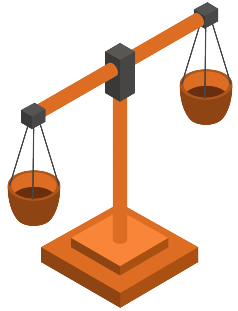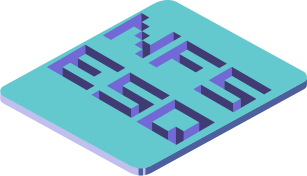Legal Guide: How to Enter a Default Judgment in California Personal Injury/Wrongful Death Case
What is a Default Judgment?:
A defendant is “in default” as soon as the defendant fails to file a responsive pleading (e.g. an Answer or a Demurrer) within the statutory time limit. This means little until the clerk “enters a default” against the defendant. The plaintiff must make an application for the clerk to enter a default judgement.
Requirements Before You Can Enter a Default:
- (1) Defendant must be served with Summons and Complaint. Then Plaintiff must have a Proof of Service of Summons and Complaint and file it with the court. Service may be accomplished by publication. [CCP 585(c)].
- (2) The time for responding to the Summons and Complaint must have passed. Defendant has 30 days after service is complete (see below) to serve a response. [CCP § 412.20(a)(3)].
- (3) Defendant must have failed to file a responsive pleading to the Complaint. E.g. an Answer or a Demurrer. Note: Even if a defendant serves a responsive pleading, if it is not filed, plaintiff may obtain a default.
- (4) Defendant must be served with a Statement of Damages. A statement of damages (Judicial Council Form Civ-050) lists the amount of monetary damages that the plaintiff seeks. Personal injury complaints are not allowed to state the amount of damages sought (to protect defendants from negative publicity) however the law requires that the plaintiff inform the defendant of the specific monetary damages sought before a default can be taken (This serves as a final reminder that the defendant may be on the hook if they fail to answer, see Greenup v. Rodman (1986) 42 C3d 822, 829). Service must be accomplished in the same manner governing service of the summons—i.e., pursuant to CCP § 413.10 et seq. [CCP 413.10, CCP 425.11]. Note: There are some pre-1993 cases that say defendant can be served by mail alone – these are out of date and incorrect.
When Has the Defendant Been “Served?”
- Personal Service: On the day of personal service. [CCP § 415.10].
- Substituted Service: The 10th day after other copies are mailed. [CCP § 415.20(a)].
- By Mail (with Acknowledgment of Receipt): On the date the defendant signs the Acknowledgment of Receipt. [CCP § 415.30(c)].
- By Publication: 28 days after first day of publication. [Government Code § 6064].
- Note: When service is by publication, it is likely that a default will follow. Therefore, it makes financial sense to publish the summons and a statement of damages at the same time.
Procedure For Entering a Default:
- (1) Time Limit: 10 days after the time for service has elapsed. If plaintiff waits longer, the court may enter an Order to Show Cause why sanctions should not be imposed. [CRC 3.110(g)].
- (2) Make Sure That You Meet All The Requirements for Filing a Default. See above. This includes serving the defendant with the summons, complaint, and statement of damages, and having the defendant fail to respond on time.
- (3) File an Application For Entry of Default. This should contain the following documents:
- Request to Entry Default Form (Judicial Council form CIV–100) (including a Declaration of mailing copies to defendant and defendant’s counsel if known);
- Proof of Service of Summons (unless already filed);
- Statement of damages and Proof of Service of Statement of Damages.. [CCP § 425.11].
- (4) Request A Default In One of Three Ways:
- (a) Request a simple entry of defendant’s default (paragraph 1.a.-c.) – Note that getting a default entered is just the first step in obtaining a default judgement.
- (b) Request a clerk’s default judgment (paragraph 1.a.-e.) – In some cases, after entry of defendant’s default, the court’s clerk is may enter judgment against the defendant without a court hearing or judicial action of any kind. This is only allowed when (1) The action is one “arising upon a contract or judgment; and (2) the lawsuit seeks recovery of “money or damages only” in a fixed or determinable amount; and (3) defendant was not served by publication. Therefore this option cannot be used in personal injury cases.
- (c) Request a default judgment hearing by the court (paragraph 1.a.-e.) – In all personal injury cases, and all cases in which defendant was served by publication, plaintiff will need a court judgement. This will require the plaintiff to “prove up” his case – meaning that the plaintiff will have to present evidence to the court, the court will consider the evidence, and then the court will enter a judgement. See more on this process below. [CCP 585; CRC 3.1800]
- (5) Mail a Copy of the Application for Default to Defendant’s Last Known Address – there is a box on the Request for Entry of Default Judgement that must be filled out indicating that the attorney is mailing a copy of the Request for Entry of Default to defendant’s last known address. It is fine to mail the copy to the defendant the same day the Request is filed with the court.
- Plaintiff Applies for Judgment.
Obtaining a Court Judgement
Step 1: Submit the Proper Documentation. [CCP 585; CRC 3.1800]
- (1) Case summary: Include the facts of the case, the parties, and the plaintiff’s claims/injuries. [CRC 3.1800 (a)(1)]
- (2) Declarations: A declaration, sword under oath, or other admissible evidence in support of the judgment requested. [CRC 3.1800(a)(2)]
- (3) Interest computations: If you are asking for interest on the judgement, you need to show how you calculated it. [CRC 3.1800(a)(3)]
- (4) Costs memo: What costs has the lawyer expended on the case so far. Use Paragraph 7 of the Judicial Council form CIV-100 for this. [CRC 3.1800(a)(4)].
- (5) Affidavit re military service: State that defendants are not in the military. Use Paragraph 8 of the Judicial Council form CIV-100 for this.[CRC 3.1800(a) (5)].
- (6) Proposed judgment: A proposed form of judgment. [CRC 3.1800(a)(6)].
- (7) Dismissal of Other Parties or Applications for Seperate Judgement – If there are other parties to the case, either request that they are dismissed, or request a separate judgement against them. [ CCP 579, CRC 3.1800(a)(7)].
- (8) Exhibits – Exhibits as necessary. [CRC 3.1800(a)(8)]. Note: If you are using photocopies, you may need a declaration to authenticate the records.
- (9) Request for attorney fees if allowed by statute or by the agreement of the parties. Note: Check with the court whether it has established a fee schedule for default judgements. Many courts have established a schedule of fees.
- (10) Proof of publication (In cases where defendant was served via publication): An affidavit by the newspaper publisher showing the dates on which summons was published.
Step 2: Hearing Date is Set by Court Clerk.
Upon receiving the above documents, the court clerk may set the matter for hearing before a judge. In some counties the plaintiff has to call the court to find out when and where the hearing will be. Check with the local court as to their procedures. In some counties the clerk simply gives the papers to the judge, and the judge then decides whether he or she can render judgement on the submitted papers, or whether a live “prove up” hearing is required.
Step 3: Prove Up The Damages
Whether done by declarations or by a live hearing, the plaintiff will have to prove up their damages be submitting evidence of the extent of their damages. The judge acts as gatekeeper to make sure that a reasonable judgement is entered. Check with the local court as to whether the judge prefers live testimony or declarations/affidavits. [CCP 585].
Time Limit for Entering a Default:
- Mandatory Dismissal of suit:
- If defendant is not served with summons and complaint within 3 years after the complaint is filed;
- OR
- If no proof of service is filed with the court within 60 days after expiration of the 3–year period (unless defendant appeared in the action by that time). [CCP §§ 583.210, 583.250].
- Discretionary Dismissal of Suit:
- If defendant is not served within 2 years after the action is commenced. [CCP § 583.420(a)(1)]
Effect of Entry of Default:
- If a default is successfully entered by a plaintiff, it instantly cuts off a defendant’s right to appear in the case. In other words, the plaintiff wins the case, and the defendant is not allowed to make any arguments on the merits of the case. The defendant may however move the court to set aside the default and allow an answer.
- While in default Defendant has NO RIGHT to appear at prove-up hearing. [Devlin v. Kearny Mesa AMC/Jeep/Renault, Inc. (1984) 155 CA3d 381].
Defendant’s Remedies to Default:
- A defendant that had been defaulted against has two options, he may (1) Request the court set aside the default, or (2) appeal the default.

This page is not legal advice, and there is no guarantee that this information is up to date. If you need legal advice, you should contact a lawyer.
This page was created by and (c) Noah Schwinghamer, a Sacramento Injury Lawyer. If you would like to copy this information, please request permission. Please feel free to link to this page.
